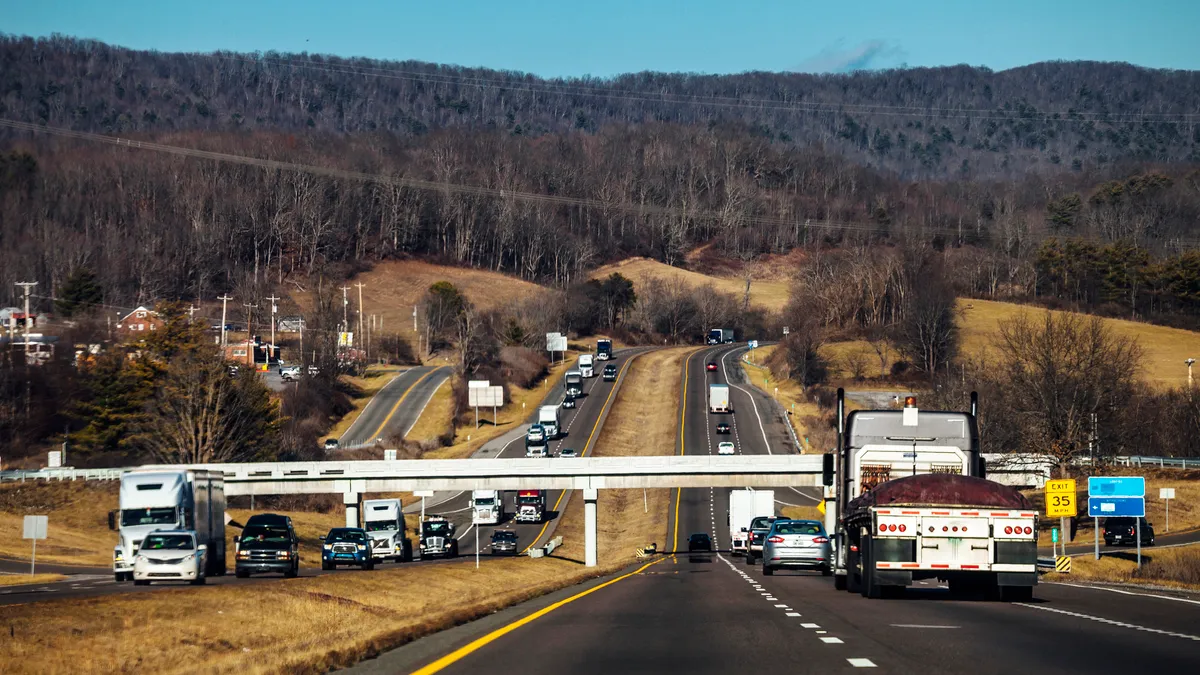UPDATE: Dec. 21, 2020: The Centers for Disease Control and Prevention's Advisory Committee on Immunization Practices recommended Sunday that transport and logistics workers be included in Phase 1c of vaccine allocation. This is a change from the panel's previous suggestion that put all essential workers, including those in transportation, in Phase 1b.
The newest recommendation splits essential workers into two categories:
- "Frontline essential workers," roughly 30 million people, in Phase 1b.
- "Other essential workers," roughly 57 million people, in Phase 1c.
The committee describes frontline essential workers as those "essential to the functioning of society" and at higher risk of exposure to COVID-19.
As of press time, the CDC had not yet adopted this guidance. States are responsible for designing their own allocation plans and are not required to follow CDC guidance.
| Frontline essential workers | Other essential workers |
|---|---|
| First responders (firefighters, police) | Transportation and logistics |
| Education (teachers, support staff, daycare) | Food service |
| Food and agriculture | Shelter and housing (construction) |
| Manufacturing | Finance |
| Corrections workers | Information technology and communication |
| U.S. Postal Service workers | Energy |
| Public transit workers | Media |
| Grocery store workers | Legal |
| Public safety (engineers) | |
| Water and wastewater |
Source: Centers for Disease Control and Prevention
Dive Brief:
- The Centers for Disease Control and Prevention's Advisory Committee on Immunization Practices recommended essential workers, including those in transportation, be in the first phase of people to receive a coronavirus vaccine, according to slides from a CDC presentation Tuesday.
- The first phase should be split into three parts, the committee said: Phase 1a (healthcare professionals and long-term care facility residents), Phase 1b (essential workers) and Phase 1c (adults with high-risk medical conditions and adults over the age of 65).
- CDC Director Dr. Robert Redfield on Thursday adopted the committee's Phase 1a recommendation. Though the federal government's Operation Warp Speed calls for centralized distribution, states are ultimately responsible for where vaccines are shipped within their borders. They are not required to follow guidelines from the agency, though they typically do.
Dive Insight:
Cold transport is gearing up to move vaccines as soon as they're ready for distribution. States were given a Friday deadline to turn in orders and distribution plans for the Pfizer/BioNTech vaccine. But it's unknown when supply chain workers might have access. The American Trucking Associations has launched lobbying efforts to get trucking on the list early.
"As the trucking industry is called upon to deliver vaccines across the country, it is imperative that truck drivers have prioritized access to the vaccine to minimize the potential for supply chain delays and disruptions," the association penned in a letter sent to the White House, the CDC committee, President-elect Joe Biden and the National Governors Association.
The CDC's decision to put essential workers in Phase 1b is generally supported by public sentiment. The committee cited a study from The Harris Poll, which showed 60% of people surveyed thought essential workers should have priority access to a vaccine. Of the participants, 73% said healthcare workers should have priority.
Trucking has accrued goodwill during the pandemic, hauling essential loads. That visibility could play a role, as governors decide how to allocate vaccines.
"Just as efforts were necessary to support prioritized distribution of [personal protective equipment] to the dedicated professionals who ensure the continuity of our nation’s supply chain, we must now focus our efforts to ensure that these same critical infrastructure workers have prioritized access to the COVID-19 vaccine as it becomes available," the ATA's letter reads.
The CDC's committee will continue meeting and making recommendations as vaccines become available and new allocation phases begin.
Until vaccine allocation reaches truckers, it will be incumbent upon drivers, employers and shippers to continue collaborating on safety measures. The CDC specifically noted that long-haul truck drivers might be exposed to the virus on the job when in close contact with truck stop attendants, store workers and dock workers. Truckers are also at risk when handling items that are frequently touched, and then touch their faces, the agency said.
The CDC's advice for truckers, like the agency's guidance for the public, is to maintain social distance when possible. That means limiting time spent outside the cab and using electronic documents when possible.
The agency also recommends making advanced appointments for cargo unloading and keeping trucks well ventilated. Employers should vet truck stops and hotels, to identify which have appropriate protections, the CDC said, encouraging drivers to ask employers and shippers to answer questions or make clarifications regarding precautions.









